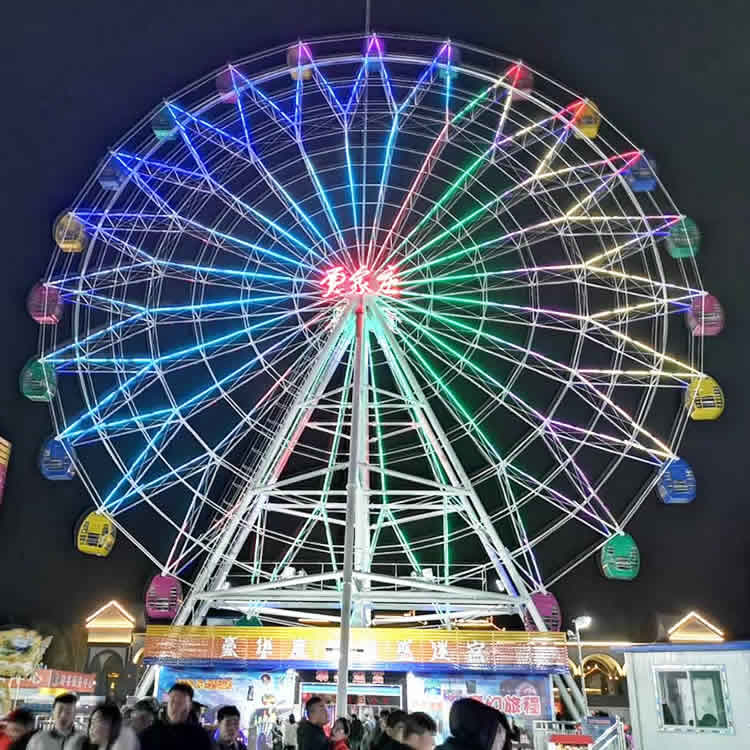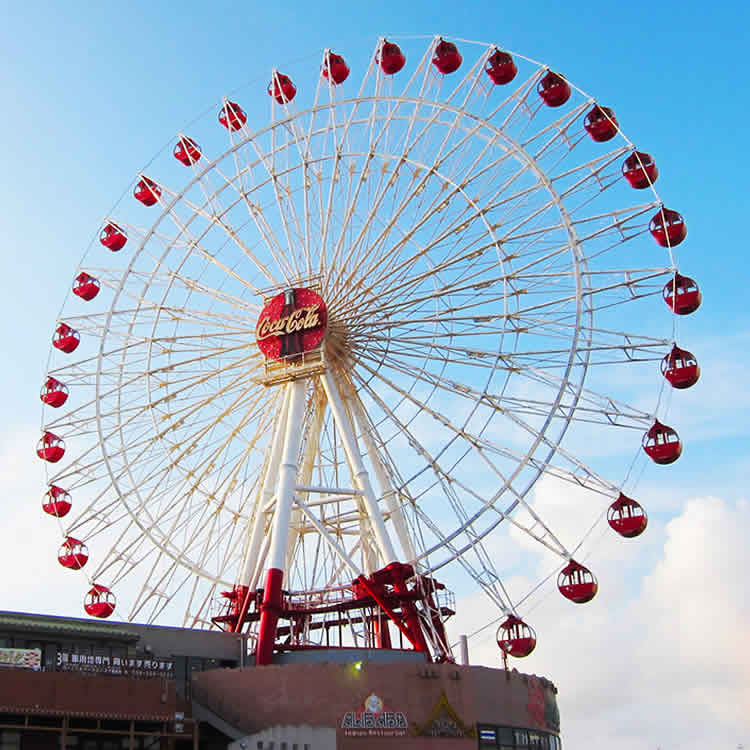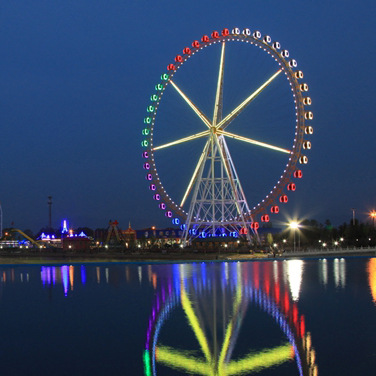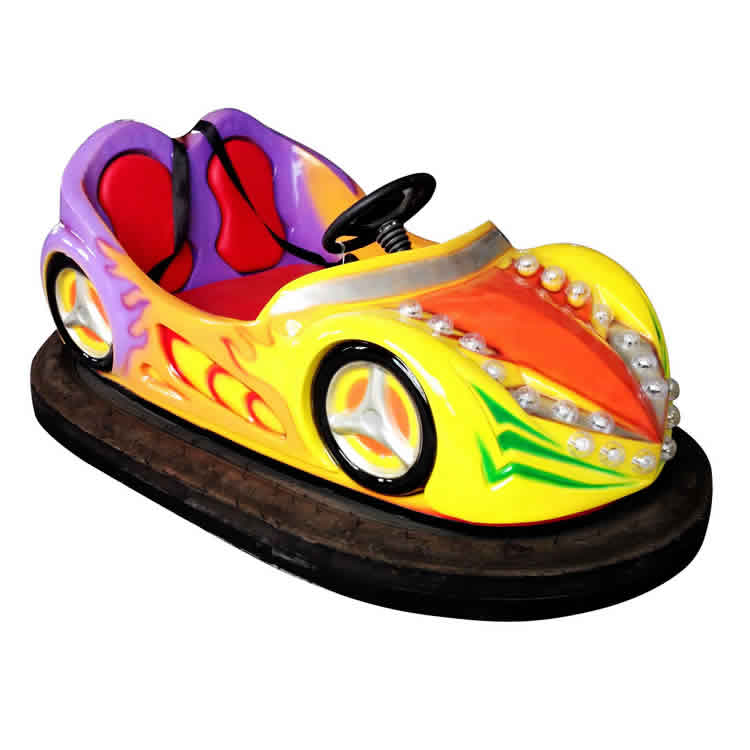High Quality Products & Services for Your Business
Maintenance and Maintenance Requirements for Ferris Wheels
Ferris wheels are iconic structures that provide breathtaking views from great heights. They are popular attractions at amusement parks, fairs, and tourist destinations. However, due to the complexity of their design and the safety risks involved, regular maintenance and inspections are critical to ensure their safe and smooth operation. This article discusses the key maintenance and upkeep requirements for Ferris wheels.

1. Routine Inspections
Routine inspections are the cornerstone of Ferris wheel maintenance. These inspections must be carried out by trained professionals at regular intervals to identify potential issues before they lead to more significant problems. Inspections should cover both mechanical and structural components, including:
- Structural Integrity: Inspect the frame, support towers, and other load-bearing parts for signs of wear, rust, or damage. Any cracks or weaknesses should be addressed immediately.
- Mechanical Systems: The drive system, gears, motors, and cables should be checked for wear and tear, as well as lubrication levels. These components are subject to heavy use, and their failure could lead to catastrophic consequences.
- Safety Systems: All safety equipment, including emergency stop systems, brakes, and sensors, should be tested regularly to ensure they function correctly.
- Electrical Systems: Ferris wheels use complex electrical systems for control and lighting. These systems must be regularly checked for faults or outdated wiring to prevent electrical malfunctions.
2. Lubrication and Cleaning
Ferris wheels have many moving parts that require proper lubrication to reduce friction and prevent mechanical failure. Regular lubrication of the bearings, gears, and other moving components is necessary to keep the system running smoothly. Additionally, routine cleaning is essential to remove dirt, debris, and corrosion-causing substances that may accumulate over time.
- Lubricants: Use high-quality lubricants designed for heavy machinery, ensuring that each part receives the appropriate amount of oil or grease.
- Cleaning: The structure should be cleaned periodically to remove any grime or pollutants, especially in areas prone to rust or corrosion.
3. Painting and Corrosion Protection

Given the outdoor environment in which Ferris wheels operate, they are particularly vulnerable to corrosion from exposure to moisture, chemicals, and pollutants. Regular painting and coating with corrosion-resistant materials can help extend the lifespan of the structure. In areas prone to saltwater (e.g., coastal regions), additional protective measures should be taken to prevent accelerated corrosion.
- Inspection of Coatings: Inspect paint and coatings for wear and damage. Areas with chipped paint should be repainted promptly to avoid corrosion.
- Use of Anti-Corrosive Materials: Apply specialized anti-corrosive coatings on metal parts to protect them from rust.
4. Electrical and Control Systems Maintenance
The electrical system is crucial for controlling the Ferris wheel’s operation, including the rotation speed, safety features, and lighting. These systems must be regularly checked for faults to prevent malfunctions that could disrupt the ride or endanger passengers.
- Control Panel and Software: The control systems should be updated and tested periodically to ensure they are operating optimally. Any software updates or patches should be installed to improve efficiency and safety.
- Wiring and Connections: Inspect all electrical wiring and connections to ensure they are secure and free of damage. Damaged wires should be replaced immediately.
5. Load Testing and Structural Stress Analysis
To ensure that the Ferris wheel can safely handle the weight of passengers and withstand wind and weather conditions, periodic load testing and structural stress analysis are necessary. These tests can help determine whether the structure is operating within its designed load limits and can safely handle the forces exerted on it during operation.
- Load Tests: Perform weight tests with simulated passenger loads to ensure the wheel’s ability to carry the maximum rated capacity.
- Wind and Weather Resistance: Assess the structure’s performance in various weather conditions, especially in areas prone to strong winds or extreme temperatures.
6. Safety and Emergency Systems
The safety of passengers is paramount. Regular testing and maintenance of emergency systems such as fire suppression, emergency brakes, evacuation protocols, and communication systems are essential to ensure rapid response in case of any malfunction or emergency.
- Emergency Stops and Brakes: Test and adjust the emergency brake systems to ensure they can bring the Ferris wheel to a safe stop quickly in case of an emergency.
- Communication Systems: Ensure that intercoms, alarms, and other communication systems are functional, allowing operators to communicate with passengers and vice versa during an emergency.
7. Documentation and Record-Keeping
It is essential to maintain accurate and detailed records of all inspections, maintenance work, repairs, and tests performed on the Ferris wheel. These records serve as proof of compliance with safety standards and help identify recurring issues.
- Maintenance Log: Keep an up-to-date log of all maintenance activities, including dates, actions taken, and any parts replaced.
- Compliance Reports: Ensure that all maintenance activities meet local regulatory standards and that the Ferris wheel passes all required safety certifications.
8. Operator Training and Safety Protocols

Ferris wheel operators must undergo rigorous training to ensure they can safely manage the ride, handle emergency situations, and maintain operational standards. Training should include:
- Operational Procedures: Operators should be familiar with standard operating procedures (SOPs), including starting and stopping the ride, adjusting speed, and responding to mechanical issues.
- Safety Protocols: Operators should be trained in emergency procedures, including evacuating passengers, responding to malfunctions, and dealing with medical emergencies.
Conclusion
The maintenance of Ferris wheels is a complex and ongoing process that requires careful attention to detail. By conducting regular inspections, performing preventive maintenance, and adhering to safety standards, Ferris wheel operators can ensure the safety of passengers and extend the lifespan of these thrilling attractions. Proper maintenance not only helps in preventing accidents but also enhances the overall experience for riders, contributing to the long-term success of the Ferris wheel as a popular amusement ride.
Related recommendations
-
What types of carnival rides are popular among children now?
630Carnivals are vibrant, exciting events that offer a wide variety of attractions and activities for visitors of all ages. One of the main draws of any carnival is its array of thrilling rides. These rides provide entertainment, excitement, and a s...
View details -
Types of Trackless Tourist Trains
436Trackless tourist trains have become a popular and efficient way for visitors to explore large parks, scenic areas, and other attractions. Without the need for a traditional railway track, these vehicles can move freely over various types of terr...
View details -
What safety standards are required for pirate ship rides?
335As a popular attraction in amusement parks and theme parks, the safety of pirate ships is of vital importance. The following are the main safety standards that pirate ship rides need to follow: Equipment design and manufacturing standardsHeig...
View details -
How is the ground grid bumper car powered?
305The ground grid bumper car is powered through a special power supply network, which is called ground grid power supply. Specifically, the power supply network is to arrange a number of conductive strips on a sufficiently large insulating board. T...
View details
 chinaparkrides
chinaparkrides






Leave a Reply